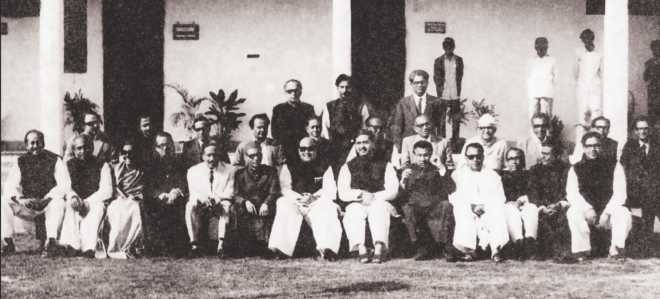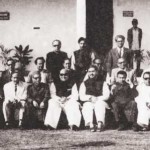Being one of the fundamental normative standards, the idea of human rights has been strengthening human civilization, years after years, to secure a dignified life for each individual irrespective of any difference or distinction in the society. The protection and promotion of human rights is now an immensely significant issue of concern to international community. The development threshold of any society, be it development of a human being or of social and economic infrastructure, can be evaluated through the prism of human rights standards. This is one of the reasons why the entire world is witnessing an all-out movement for the protection and promotion of human rights today. However in doing so, human rights defenders, advocates and/or activists, in whatever name we recognize them, often experience different state and non-state sponsored challenges to fulfill their obligations through rights activism.

At this backdrop, the present Manual, titled Human Rights Defenders Manual, for review has been primed to focus on the role, activities and challenges of Human Rights Defenders (HRDs). Written in Bangla, the Manual implies to urge for a safe and secured environment where HRDs can work without fear, interference and manipulation.
This Manual can be claimed as the first human rights focused guidebook since the creation of National Human Rights Commission (NHRC) in Bangladesh. It figures out the international standards that could protect the activity of HRDs, and recognizes the legitimacy of their activity.
The Human Rights Defenders Manual has been authored by Rokeya Chowdhury, a teacher of law at the University of Dhaka and an O’Brien Fellow at McGill University Centre for Human Rights and Legal Pluralism. National Human Rights Commission, Bangladesh is the initiator and publisher while Relief International-Bangladesh facilitated the publication of this Manual in 2013.
The Manual is divided into six chapters. Following a preface and an introductory chapter, which describes the rationale for publishing this Manual, the first chapter starts with definition of the term Human Rights Defenders. This chapter also gives some categorical examples of HRDs, and illustrates their types and scope of activities in the context of Bangladesh.
According to the Manual, a HRD is anyone working for the promotion and protection of human rights. This broad definition includes professional as well as non-professional human rights workers, volunteers, journalists, lawyers and NGO workers, environment activists and anyone else running, even on an occasional basis, a human rights activity. They may be called as human rights activists, human rights advocates, human rights monitors, or even human rights professionals. However, as this Manual suggests, the determining factor of considering a person as a HRD is the activities or roles played by him or her towards human rights protection and promotion; not the professional status or dignity at all.
Similarly, the Office of the High Commissioner for Human Rights (OHCHR) defines a “Human Rights Defender” as a person who, individually or with others, acts to promote or protect human rights. To illustrate, HRDs are identified by what they do and it is through a description of their actions and of some of the contexts in which they work.
Chapter Two sorts out the rights of and protection for the HRDs guaranteed under the Declaration on Human Rights Defenders 1998. Here, emphasis has been given on the fact that enjoyment of those guaranteed rights and protection depends upon the non-violent and peaceful attitude and stance of HRDs in all situations.
The possible threats, perils and vulnerability of working as HRDs in Bangladesh are the key issues of Chapter Three of this Manual. The discussion centers upon some glaring instances of intimidation to life and activities of HRDs such as murder, attempt to murder, threat to commit murder, abduction, enforced disappearances, arrest and detention, defamation suit, false accusation and torture, violence against family members; and other countless forms of harassment. In this chapter, special attention has been given to the bullying faced by female rights activists.
Chapter Four comprises of eleven case studies from home and abroad. Here nine cases from Bangladesh illustrate instances where discriminatory action were taken by the state and non-state actors against HRDs. At the same time two case studies from the UN Human Rights Council jurisdiction have been referred to where the Council took measures for the protection of HRDs. These case studies portray that the rights and protection of HRDs have been violated and threatened by several government and non-government organizations and individuals. Such a case study, for instance, analyzes an incident of 2013 when women journalists were being repeatedly restricted to collect news and report in both print and electronic media on the ground of not maintaining parda or head covering. Different religious extremist groups were involved in violating the women, as they used to think that female journalists are not publicly allowed to attend any religious political group’s assembly or meeting for the purpose of collecting news story.
Chapter Five describes some precautionary and safety measures necessary to be taken for risk management and ensuring a secured working environment for HRDs in Bangladesh. Amongst others, the notables are: taking decision after assessing risk and protection feasibility; taking regular note by the law enforcing agencies of probable suspicious incidents and reviewing them; prevention of threats and reaction; adopting safety scheme and strategy; evaluating them time to time; having concern about information and technology matters and utilizing human rights organization and civil society network effectively.
The concluding chapter offers a set of recommendations. It prescribes that government should protect and ensure the rights of HRDs guaranteed under the 1998 Declaration. Significantly this Declaration marks a historic achievement in the struggle towards better protection of those at menace for carrying out legitimate activities to uphold human rights, and reaffirms their rights that are instrumental to the defence of human rights. Inspired by such an achievement, the manual urges for the state to take measures to fulfill the responsibilities in securing rights of HRDs. Moreover, civil society and NGOs such as mass media, multi-national corporations are required to work hand in hand with the government.
At the same time, full-fledged protection of human rights of HRDs is possible when they put forward their own responsibilities for having a better environment to work upon and enjoy all human rights in compliance with standard. To sum up, the Manual reorients that “right to defend human rights is a human right”, as stated by NHRC chairman Professor Dr. Mizanur Rahman in the preface of this Manual.
The Human Rights Defenders Manual is quite non-traditional and constitutes a splendid contribution to the existing literature on human rights in Bangladesh. In this short space, it is almost impossible to do justice to the present Manual which presents a thought provoking analysis of the human rights issues of rights defenders from the perspectives of societal values, gender, culture, politics and economics. While reading the Manual, one would be able to capture the dynamics of rights and duties of HRDs and become familiar with the author’s exploration of practical aspects of human rights activism in Bangladesh. It will undoubtedly be a valuable resource for everyone interested in human rights activism in both home and abroad.
The author is thankful to Preeti Kona, a Managing Editor of Dhaka Law Review, for her comments and suggestions on an earlier draft of this article.
Citation:
Emraan Azad, “’Human Rights Defenders Manual’: Protecting the Right to Defend Human Rights” (DHLR Blog, 25 April 2015) http://www.dhakalawreview.org/blog/2015/04/human-rights-defenders-819





















People reacted to this story.
Show comments Hide commentsWonderful piece of review of a useful manual for the right activists. Congrats Emraan Azad.